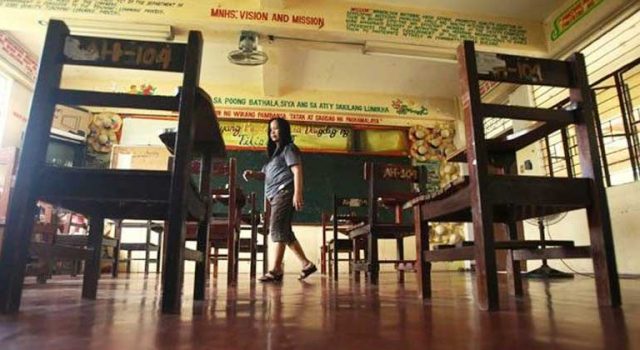THOUGH CHILDREN are unlikely to be a major source of community transmission of coronavirus disease 2019 (COVID-19), resuming face-to-face classes will have to occur in phases starting in low-risk areas, according to pediatricians who participated in a webinar organized by the University of the Philippines (UP).
“There are so many things to consider (but) there are many advantages of starting schooling because of the mental effect that the prolonged lack of (physical) schooling has caused our children,” said Dr. Ma. Liza Antoinette M. Gonzales, a pediatric infectious disease specialist and associate dean at the UP College of Medicine, at the virtual event titled “COVID-19 in Children.”
“If we are able to open our malls and business establishments, we also have to consider opening our schools (at some point).”
The Department of Heatlh (DoH) case bulletin recorded 1,441,746 COVID-19 cases as of July 5. Around 148,000 cases (approximately 10.6%) are patients below 20 years old, while 6.5% represent those below 15 years old.
“Death rates are low in younger age groups and increase with age,” said Dr. Joselyn A. Eusebio, president of the Philippine Pediatric Society, emphasizing that this was consistent with reports around the world where children comprise 1–10% of the diagnosed COVID-19 cases.
‘GENERALLY MILD IN CHILDREN’
“COVID-19 is generally mild in children, with better outcome compared to adults,” said Dr. Gonzales, citing a February 2021 study reviewing 10,251 pediatric patients across 31 countries that found fever (63.3%) and cough (33.7%) as the most common symptoms among children.
Severe cases of COVID-19 in children, she added, are usually due to existing medical conditions and comorbidities.
In an online registry focused on COVID-19 in children, the Pediatric Infectious Disease Society of the Philippines recorded 972 cases in the country from July 3, 2020, to May 31, 2021, 38% of which were mild; 25%, moderate; and 20%, asymptomatic. Critical cases accounted for 10%; severe cases, 7%.
“Due to lack of more systematic testing of children, including children with mild symptoms as part of contact tracing, the true burden of infection in children is unclear,” said Dr. Gonzales.
BACK TO SCHOOL?
Commenting on President Rodrigo R. Duterte’s decision to turn down proposals of resuming in-person classes, Education Undersecretary Dr. Diosdado M. San Antonio said: “We understand from the presentation of Dr. Gonzales that, indeed, kids may not be so prone to getting infected, but we also respect the decision of the President in putting premium on the health and safety of children and Filipinos.”
DoH, for its part, is looking into a phased implementation of face-to-face classes after holding conversations with educators and stakeholders.
“There were a lot of recommendations set and presented by the body, but we have to start with maybe piloting it initially in certain areas of low risk and make sure that the school will have provisions for all the safety measures that need to be followed,” Dr. Eusebio said.
Dr. Gonzales agreed that caution and care need to be exercised when choosing the pilot areas. “Before we reopen schools, we have to consider: Is there ongoing community transmission? Are the teachers vaccinated? Are the schools’ infrastructure prepared, with enough ventilation and enough space to ensure that children have appropriate physical space?” she said. — Brontë H. Lacsamana

